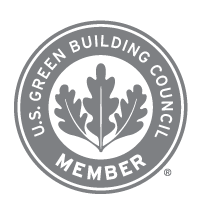Longitudinal Joints: Sealing Road Seams for Pavement Preservation
Category: Blog Articles By: John Calvert
The premature failure of centerline joints, lane-to-lane joints and rumble strips is generally recognized by pavement preservation managers to be a grave threat to the sustainability of our federal interstate highway system). The longitudinal joints where paving mats meet in Hot Mix Asphalt (HMA) pavements and overlays are vulnerable to moisture intrusion should the wearing surface mats fail to bond properly during installation. Insufficient compaction along an area approximately 18 inches on either side of a roadway’s longitudinal joints is the primary culprit in this scenario.
However, as with any other “seam” that is bonding two surfaces together, longitudinal joints represent a systemic weakness even when best road construction practices have been diligently followed. In addition, the interactive molecular structure of asphalt roadways is continually deteriorating due to a combination of factors. These include hot mix and install temperatures, the oxidation caused by a roadway’s exposure to ultraviolet (UV) sunlight, and the inherent volatilization of the maltene fractions that are primarily responsible for the flexibility and adhesion properties of asphalt binders.
To mitigate the problems associated with premature longitudinal joint failure requires a combination of best-practice construction and proactive preventive maintenance.
Historical Context
For years, the agencies responsible for preserving our nation’s highways experimented with various methods for improving joint bonds. A variety of attachments were installed on paving machine screeds to produce slanted, notched or wedge-type pavement edges along the centerline joints where two adjacent HMA mats overlap.
Another approach was to use various types of asphalt tack material, which would be applied to the face of the first laid mat prior to laying the adjacent one, essentially attempting to glue the two separate mats together. For rumble strips, a common method was to simply apply some type of emulsified asphalt cement coating in the hope of providing some additional surface protection.
Revising construction specifications to require higher compaction densities along the joint has doubtless improved paving practices, but improving joint construction alone is unable to eliminate premature joint-area deterioration.
How Joint Areas Degrade
Understanding the deterioration process is a necessary first step to mitigating its effects. Once moisture seeps into a joint area, the stress created during successive freeze/thaw cycling creates openings in the joints. It is not an accident that longitudinal joint failures are primarily associated with the northern areas of the country, where freeze/thaw cycling is an annual occurrence.
As joints open, more water infiltrates, migrating under the asphalt pavement mats. Eventually the wearing surface mat begins to separate from the lower asphalt pavement surface. As traffic makes its way across our highways, the pavement loosens further and joint pop-outs begin to occur.
The side of the joint with a lower compaction density will typically have more voids between aggregates. As the freezing action loosens the aggregate, severe raveling can occur. As stones pop away and the joint opens up, UV rays penetrate more deeply into the roadway, accelerating maltene depletion and prematurely aging the asphalt binder.
Extending the Service Life of Longitudinal Joint Seams
In 2002, Jim Sorenson of the Federal Highway Administration (FHWA) asked Colin Durante, founder of Pavement Technology, Inc. (PTI) whether it might be possible to develop a product and process to resolve the costly problem of premature longitudinal joint failures. Sorenson was familiar with PTI’s success in applying Reclamite®1 asphalt rejuvenator, which uses Maltene Replacement Technology (MRT) to extend the life of asphalt roadways.
PTI had a deep understanding of the Rostler Analysis2 and the science behind MRT, a field-proven method for feeding maltene-rich chemistry back into aging asphalts in order to restore the flexibility and adhesion properties resulting from the gradual diminishment of maltene fractions3 in asphalt pavements.
But replenishing the maltenes would solve only half the problem; what was needed was a chemical solution that could reverse the aging process caused by maltene depletion while strengthening the weaker areas around longitudinal joints.
PTI’s solution was to combine maltene-restoration chemistry with a polymer capable of providing mesh-type reinforcement and strengthening of the upper 3/8 to ½ inches of the pavement. Formally introduced to the market in 2006, JOINTBOND® asphalt joint stabilizer protects longitudinal joints and surrounding areas by deeply penetrating the pavement to stabilize critical joints and adjacent areas. It is a field-proven solution that helps prevent the cracking and separation of joints, protecting roadways against the intrusion of air, water and salt brine while naturally restoring maltene fractions to reverse the aging process.
JOINTBOND joint stabilizer infuses new maltenes into a roadway’s upper sections, where they actively flux with the aging asphalt binder to restore the proper ratio of asphaltenes and maltene fractions. The stabilizer’s polymer component fortifies the area surrounding longitudinal joints, preventing raveling and extending their service life. In addition to delaying any cracking or seam separation, JOINTBOND joint stabilizer virtually eliminates joint pop-outs.
A Proven Process
Since its introduction, JOINTBOND joint stabilizer has treated thousands of miles of longitudinal joints and rumble strips across a number of states. Lab core testing from treated pavements has demonstrated improvements in the viscosity of the asphalt binder to almost-new levels. Viscosity is generally acknowledged by pavement preservation professionals to be the relevant factor in determining the adhesive properties, flexibility and longevity of asphalt binders. Visual observation as well confirms the absence of joint failure along treated highways.
As a polymerized maltene-based emulsion, JOINTBOND stabilizer improves the chemistry of the in-place asphalt binder while adding a physical in-depth seal to the construction joint, effectively sealing the joint and its surrounding area. Application is temperature- and moisture-sensitive and can only be performed by authorized applicators using a computerized distributor truck that has been cleaned of all other materials to prevent contamination.
Unlike bio-based alternative chemistries that may have Kauri- butanol (Kb) values4 to rival kerosene in their solvent intensity, JOINTBOND longitudinal joint stabilizer will not adversely disrupt the asphalt matrix and contains no Volatile Organic Compounds (VOCs). It is the natural way to restore the chemical properties depleted through natural and traffic-related stresses.
By properly applying JOINTBOND stabilizer during the first year of a joint stabilizer’s life, state DOTs have achieved five-year service life extensions at less than half the cost that would have been required to repair those joints. The cost of milling and repaving is close to ten times more than the cost of treating asphalt roadway joints with JOINTBOND stabilizer, so every year gained between replacements represents a sizable savings to the FHWA.
Conclusion
Thanks to the ingenuity and due diligence of FHWA pavement preservation specialists, great strides have been made in improving the quality of construction of HMA roadways and overlays. When those quality pavements are diligently maintained with proven service-life extending technologies such as JOINTBOND longitudinal joint stabilizer, significant reductions in expense and traffic disruptions can be achieved.
- Reclamite® is a registered trademark of Ergon, Inc.
- Rostler, F.S., and White, R.M., Influence of Chemical Composition of Asphalts on Performance, Particularly Durability, Third Pacific Area Meeting Papers, Symposium on Road and Paving Materials, San Francisco October 1959
- For more information on MRT, see “The Science of Maltene Replacement Technology for Sustainable Asphalts,” Michael P. Durante, 2019
- https://en.wikipedia.org/wiki/Kauri-butanol_value







